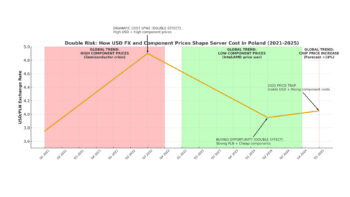John M. Martinis, a recent winner of the Nobel Prize in Physics (2025) and one of the architects of Google’s breakthrough in ‘quantum supremacy’, is starting a new chapter. This time his goal is not a laboratory record, but the creation of a practical, mass-produced quantum supercomputer. On Monday, he announced the formation of the Quantum Scaling Alliance, bringing in the heavy artillery: supercomputing giant HPE and key players in the semiconductor supply chain.
The initiative is a direct response to the industry’s biggest pain point. Quantum computers, promising a revolution in chemistry or medicine, remain largely unitary works. As Martinis put it, since the 1980s quantum chips have been produced “in an artisanal way”. The Quantum Scaling Alliance aims to change this by moving the production of qubits from laboratories to factories.
That’s why the presence in the alliance of Applied Materials, a supplier of chip-making machines, and Synopsys, a leader in chip-design software (EDA), is crucial. The idea is to use the same sophisticated tools that today produce millions of processors for smartphones and AI servers to build quantum systems. This signals the industry’s desire to move “to a more standardised, professional model”.
However, building stable cubits at scale is only half the battle. The real challenge, the partners emphasise, lies in integration and scaling. Masoud Mohseni, head of the quantum team at HPE, tones down the enthusiasm, noting that moving from hundreds to thousands of qubits raises entirely new issues. “People naively think [scaling] is linear. This is simply not true,” Mohseni stated.
HPE’s task will primarily be to integrate delicate quantum circuits into classical supercomputers. It is they who are to manage the system in real time and handle the crucial error correction process, without which qubits are useless. The consortium also included specialised companies such as Riverlane and 1QBit (responsible for error correction) or Quantum Machines (control systems), which shows that the aim is to build a complete, commercial technology stack.












